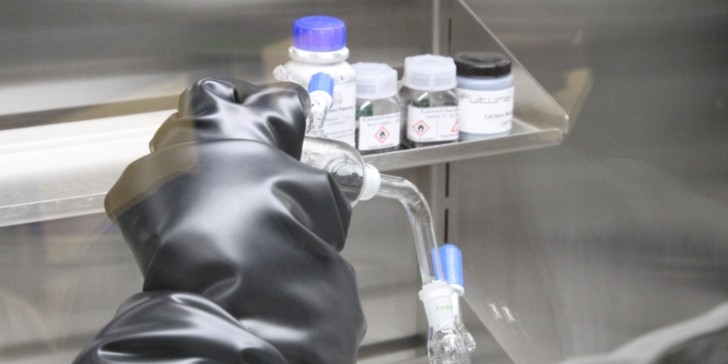NIOSH publishes assessment of industrywide CNT exposure

As a reaction to wide-ranging health effects that could result from exposure to carbon nanotubes (CNT), the National Institute for Occupational Safety and Health (NIOSH) set a recommended exposure limit (REL) for CNT and CNF. The purpose of this study was to conduct an industrywide exposure assessment among US CNT and CNF manufacturers and users. In most of the cases, the recommended exposure limit was not exceeded. Overall, measured concentrations were higher at secondary manufacturing sites than at primary manufacturing sites . NIOSH recommends a monitoring of worker exposure to the inhalable as well as the respirable fraction.
Fourteen total sites were visited to assess exposures to CNT (13 sites) and CNF (1 site). Samples of elemental carbon concentrations were collected for both, the inhalable and respirable fraction within the personal breathing zone. In addition, area samples were taken. The samples of the inhalable fraction within the breathing zone were additionally analysed by Transmission electron microscopy (TEM) to quantify and size CNT and CNF agglomerate and fibrous exposures.
Average respirable carbon concentration within the breathing zone measured over 8 hours amounted to 0.16 µg per m3. An analogous concentration of the inhalable fraction of 0.38 µg per m3 was found. TEM-Analysis showed an 8-hour average concentration of 0.003 CNT or CNF structures per cm3. The most common CNT structure sizes were found to be larger agglomerates in the 2–5 µm range as well as agglomerates >5 µm. A statistically significant correlation was observed between the inhalable samples for the measured elemental carbon and structure counts by TEM. This means that the two analysis methods do not contradict.
Overall, 96 % of the samples showed a carbon concentration within the personal breathing zone below the limit recommended by the NIOSH of 1 µg per m3. It was not a surprise to find the inhalable mass concentration to be higher than the respirable concentration, as the most CNTs and CNFs appear as larger agglomerates. Thus, the occupational exposure seems to be mainly to larger structures of the inhalable fraction. Nevertheless, a small fraction of respirable size above the limit was also found, depending on the specific materials used and the processes involved. Until more information is known about health effects associated with larger agglomerates, it seems prudent to assess worker exposure to airborne CNT and CNF materials by monitoring elemental carbon at both, the respirable and inhalable size fractions. Concurrent TEM samples should be collected to confirm the presence of CNT and CNF.
Source: NIOSH (2015)
Study: Dahm et al.: Carbon Nanotube and Nanofiber Exposure Assessments: An Analysis of 14 Site Visits. The Annals of Occupational Hygiene, April 2015, doi: 10.1093/annhyg/mev020
Image: Handling of nanomaterials in a glovebox. Picture taken at the Leuna Laboratory of the BG RCI. © 2015 - The Innovation Society, St. Gallen